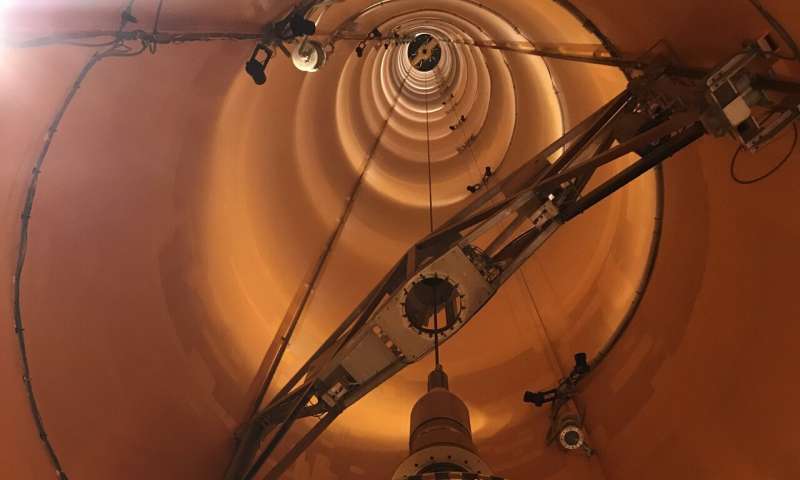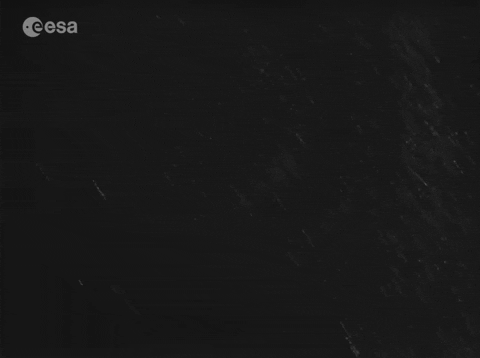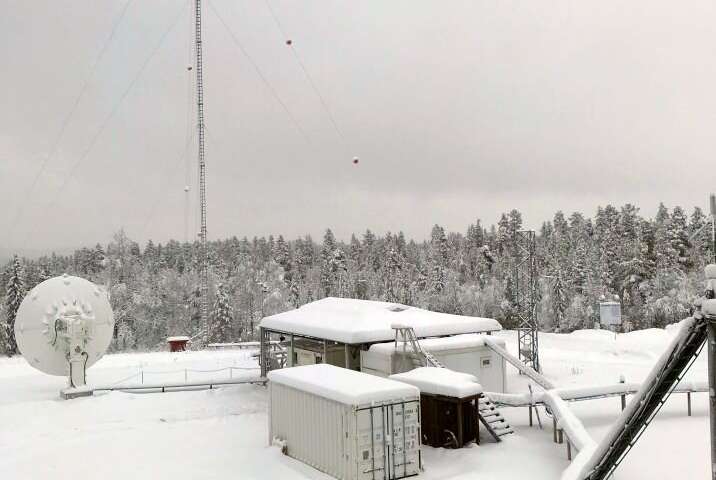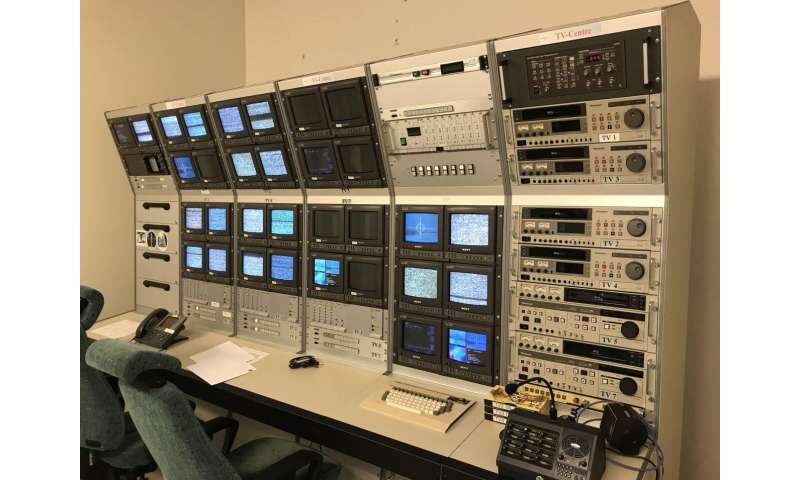
How are celestial bodies created? Aside from philosophical questions, researchers are taking practical steps to investigate the very first moments when planets are born—on a sounding rocket launching from Sweden next week.
Astronomers conclude that planets are formed out of cosmic dust and gas from an interstellar cloud around a newborn star, but exactly how dust particles start to assemble into larger celestial bodies is still a mystery.
Go back far enough in time and Earth will not have existed, but its formation must have started somewhere, sometime. And this very first clumping together of dust particles in zero gravity will be investigated in the ICAPS experiment.
Researchers will shoot silicon dioxide—also called silica—dust particles into a vacuum chamber and observe their growth, how they interact and stick together.
"It is a bit like hosting a party where you want people to mingle and interact," likens Astrid Orr of ESA's SciSpacE team. "We are trying to create the ideal conditions for small groups to form by adjusting the style of the room, or playing the right music—in this case we are adjusting the conditions in the experiment chamber, relative speed of the particles and especially particle concentration.
"Like making a snowman, you need the right snow."
-

The ICAPS experiment is a 1.2-m-long module that houses the vacuum chamber, an injector of silica particles, and cameras to observe their interaction. The experiment has ‘flown’ with promising results in the ZARM drop tower in Bremen, Germany, but scientists want to observe the process for longer. Drop tower experiments allow for up to nine seconds of microgravity whereas sounding rockets will allow researchers to watch up to six minutes of planet formation in progress. Credit: European Space Agency -

This video shows silicon dioxide – also called silica – dust particles being shot into a vacuum chamber in weightlessness to observe their growth, how they interact and stick together. The video was recorded during a drop tower experiment at the Zarm tower in Germany and played back at twice reduced speed. Credit: ICAPS team -

Kiruna, Sweden, at the Esrange launch facility for the Texus-56 sounding rocket launch, November 2019, with two ESA experiments: ICAPS is looking at how planet's are formed from dust and Perwaves is investigating a new type of flame by burning metal powder in zero gravity. Credit: ICAPS team -

Kiruna, Sweden, at the Esrange launch facility for the Texus-56 sounding rocket launch with two ESA experiments: ICAPS is looking at how planet's are formed from dust and Perwaves is investigating a new type of flame by burning metal powder in zero gravity. Sounding rockets launch experiments to the edge of space before falling back to Earth. These flights can carry 100-kg experiments up to 750 km high with up to 13 minutes of microgravity included in the ticket. Once the rocket motors shut off, the experiments enter freefall, even though at this point they are still heading upwards. On the downward arc parachutes deploy and gravity takes over once again, lowering the experiments to the ground with impact speeds of around 8 m/s. Credit: ICAPS team -

Kiruna, Sweden, at the Esrange launch facility for the Texus-56 sounding rocket launch, November 2019, with two ESA experiments: ICAPS is looking at how planet's are formed from dust and Perwaves is investigating a new type of flame by burning metal powder in zero gravity. Credit: ICAPS team
The ICAPS experiment is a 1.2-m-long module that houses the vacuum chamber, an injector of silica particles, and cameras to observe their interaction. The experiment has "flown" with promising results in the ZARM drop tower in Bremen, Germany, but scientists want to observe the process for longer.
Drop tower experiments allow for up to nine seconds of microgravity whereas sounding rockets will allow researchers to watch up to six minutes of planet formation in progress.
The experiment aims to simulate growth of micrometer-sized particles—similar in size to talcum powder—to millimeter-sized aggregates and investigate the physical phenomenon of Brownian motion. This process is believed to be the main mechanism of how "planet embryos" evolved in the young solar system.
"When you see dust moving in sunlight, the tumbling motion of the small dust is in part due to Brownian motion." explains Astrid. "The Brownian model describes the movement of particles suspended in a gas or a liquid, but on Earth gravity also influences the movement and makes it hard to create a pure laboratory model of Brownian motion."
The ICAPS experiment will provide insight into the very early stages of planet formation. Meanwhile, ESA's exoplanet satellite Cheops—scheduled for launch in mid-December—will study the end result of this process: planets outside our solar system typically orbiting other stars and known as exoplanets.
Explore further
Citation: Making planets in a rocket (2019, November 15) retrieved 15 November 2019 from https://phys.org/news/2019-11-planets-rocket.html
This document is subject to copyright. Apart from any fair dealing for the purpose of private study or research, no part may be reproduced without the written permission. The content is provided for information purposes only.
https://phys.org/news/2019-11-planets-rocket.html
2019-11-15 12:06:13Z
CBMiMWh0dHBzOi8vcGh5cy5vcmcvbmV3cy8yMDE5LTExLXBsYW5ldHMtcm9ja2V0Lmh0bWzSATBodHRwczovL3BoeXMub3JnL25ld3MvMjAxOS0xMS1wbGFuZXRzLXJvY2tldC5hbXA
Bagikan Berita Ini















0 Response to "Making planets in a rocket - Phys.Org"
Post a Comment